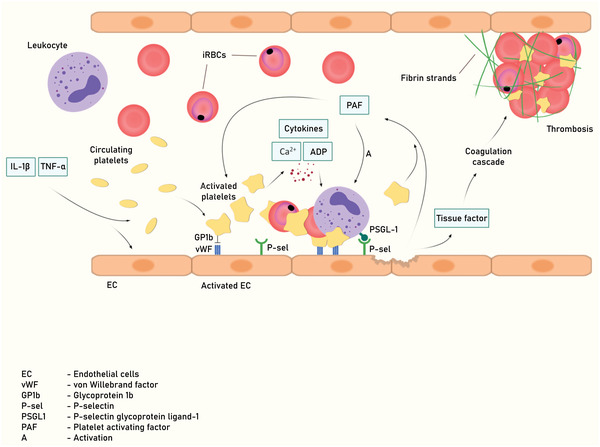Figure 5.

Interaction between brain vascular endothelium and platelets during CM. During cerebral malaria, increase adhesion of iRBC and leukocytes (mainly mononuclear cells) to brain vasculature result in capillary congestion. This provokes an increase secretion of proinflammatory cytokines, increase of cellular adhesion molecules expression, release of hemozoin from ruptured iRBC, decrease of NO, ECs dysfunction, and BBB. Transmigration of iRBC and immune cells into the brain parenchyma activates microglial cells and astrocytes. Excessive secretion of inflammatory cytokines and chemokines and decrease of NO, COX and LOX further exacerbate ECs activation and BBB dysfunction.
